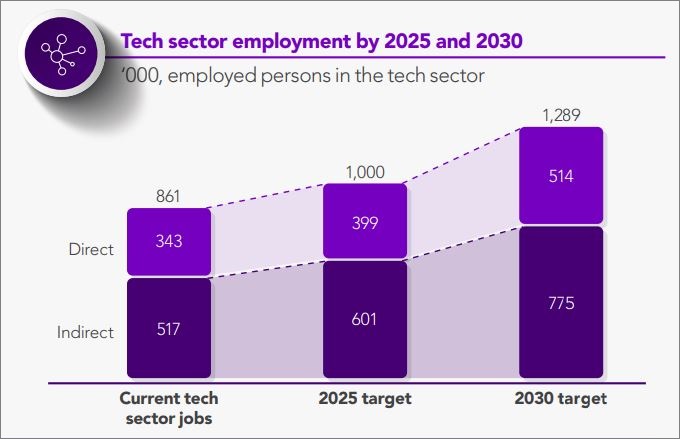The recently formed Tech Council of Australia wants to see one million people employed in the technology sector by 2025.
Kate Pounder, CEO of the Tech Council, said the industry will need an extra 286,000 workers over the next four years.
“To meet this ambitious target, reskilling and upskilling workers must become the primary way tech jobs are filled.”
“We believe with the right investment, training and regulation – the tech sector will provide jobs, economic growth, and a pathway to secure employment for the next generation of Australian workers.”
According to data from Accenture, which the Tech Council commissioned to put together a report about Australia’s technology workforce when it formed in August, government policy reform will need to account for 93,000 of the new tech workers needed by 2025 while the rest are predicted to arrive through business-as-usual activities.
The figures also estimate 147,000 people will leave the technology workforce in the coming four years.
The Tech Council’s has picked up 35 new member organisations in the two months since it formed, including the likes of Amazon Web Services, LinkedIn, REA Group, and Seek, and has quickly become a who’s who of Australian tech companies and investment firms.
As such, its motives are clear: make Australia a more favourable place for tech companies to do business.
In a roadmap to one million jobs the lobby group unveiled on Monday, it offered three routes for getting the government to assist with its goal of reaching one million tech jobs over the next four years.
First is the direct route, achieved by getting the government to adopt the Tech Council’s jobs target, helping re-skill 60,000 early and mid-career workers, and through ongoing targeted skilled migration programs.
More workers are needed to reach the Tech Council's targets. Image: supplied
But then there’s the money route. This is about encouraging more international firms to set up shop in Australia and, crucially, freely allowing money from foreign investors to flow into the sector.
“Today Australia ranks in the bottom third of OECD countries for domestic capital investment in technology across the economy,” the roadmap says.
“Matching global peers would unlock $14 billion in economic contribution.”
Finally, there’s the regulation route.
The Tech Council wants government to take on a loose regulatory stance when it comes to technology in order to reap the economic gains.
It proposes a set of principles for government technology regulation including that it “have a bias to innovation and growth”.
“Australia can be one of the world’s leaders in creating and adopting new tech products,” the Tech Council said.
“To do this, we need a regulatory environment that is proportionate and predictable for investors, innovators and consumers, interoperable with other jurisdictions, and that consistently follows a set of best practice regulatory principles.”











